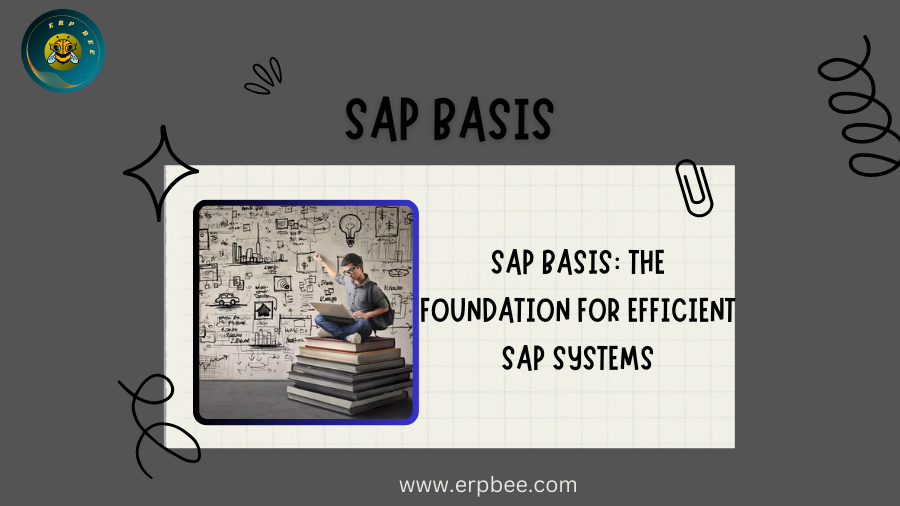Introduction: In today's digital landscape, SAP systems play a critical role in enabling businesses to streamline operations and optimize processes. At the heart of every SAP implementation lies the SAPbasis, a vital component responsible for ensuring the smooth functioning of the entire SAP landscape. In this blog post, we will explore the significance of SAP Basis, its key functionalities, and the importance of effective management for seamless SAP operations.
Key points SAP Basis:
- Understanding SAP Basis:
- SAPbasis serves as the technical foundation for SAP systems, encompassing various functions required for managing and maintaining SAP landscapes.
- It provides the infrastructure that allows SAP modules and applications to function cohesively.
- Key Functionalities of SAP Basis:
a. System Administration:
- SAP Basis handles system configuration, installation, and upgrades, ensuring optimal system performance.
- It manages system parameters, profiles, and user accounts to maintain system integrity.
b. Database Administration:
- SAP Basis oversees database systems that store and retrieve data for SAP applications.
- It performs tasks such as database backup, recovery, and data maintenance to ensure data reliability.
c. User Administration and Security:
- SAP Basis manages user accounts, roles, and authorizations within the SAP system.
- It ensures that users have appropriate access levels and safeguards data security.
d. Performance Monitoring and Tuning:
- SAPbasis monitors system performance, identifies bottlenecks, and optimizes system resources.
- It fine-tunes parameters and implements performance-enhancing techniques to ensure efficient operations.
- SAPbasis facilitates the seamless movement of configuration and customization objects across SAP systems.
- It ensures that changes made in development environments are properly transported to production environments.
f. Batch Job Scheduling:
- SAPbasis automates recurring tasks, such as data backups, report generation, and data integration, through batch job scheduling.
- It ensures the timely execution of these tasks, improving efficiency and reducing manual efforts.
- Components of SAP Basis:
a. Application Server:
- The application server executes SAP programs and processes, handling user requests and managing processing loads.
b. Database Server:
- The database server stores and retrieves data for SAP applications, ensuring data integrity and availability.
c. Client-Server Architecture:
- SAPBasis utilizes a client-server architecture, where clients access SAP systems through graphical interfaces or web browsers.
- Servers handle processing and data storage, ensuring efficient communication between clients and servers.
d. System Landscape Directory (SLD):
- The SLD acts as a central repository, storing information about the technical landscape of SAP systems.
- It keeps track of software components, versions, and dependencies, aiding in system configuration and management.
e. SAP Router:
- The SAP Router provides secure remote access to SAP systems while protecting them from unauthorized access.
f. Central Services Instance:
- The central services instance manages critical functions, such as message serving, enqueue server, and ICM, for the SAP system.
- Importance of Regular SAP Basis Maintenance:
- Regular maintenance of the SAP Basis is essential to ensure system stability, security, and optimal performance.
- Tasks such as patching, monitoring, backups, and system audits help identify and resolve issues proactively.
Conclusion
SAP Basis forms the foundation for efficient SAP systems, enabling organizations to leverage the power of SAP applications effectively. Understanding the functionalities and components of SAPbasis is vital for successful SAP implementation and ongoing management. By adopting best practices and prioritizing regular maintenance, organizations can ensure the seamless operation of their SAP landscapes, maximizing the benefits of SAP technologies.
